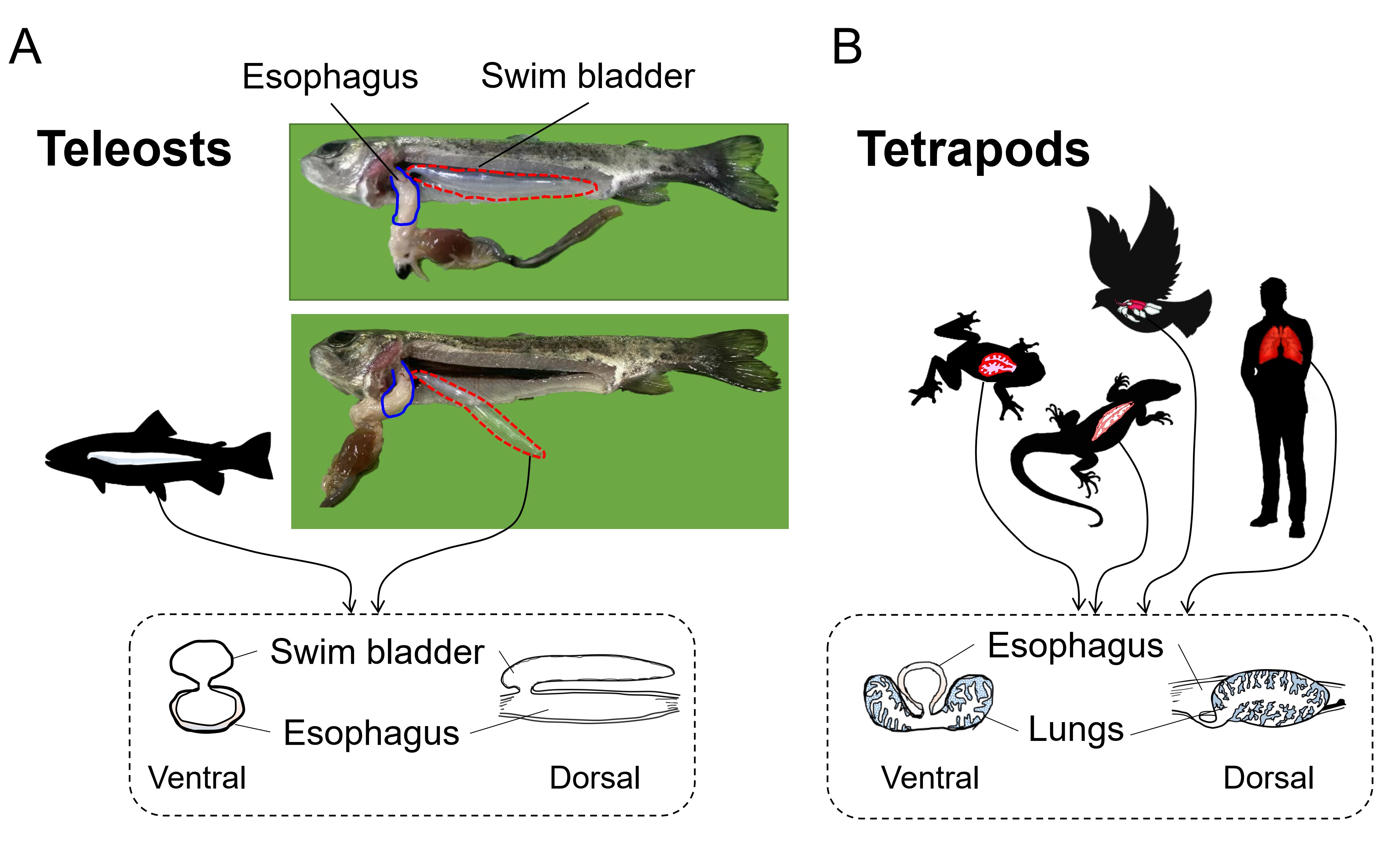Highlights
Teleost Swim Bladder, an Ancient Air-filled Organ that Elicits Mucosal Immune Responses

Diagrammatic cross and longitudinal sections of the swim bladder and lung in vertebrates (Credit: IHB)
In vertebrates, air-filled organs (AOs)-lungs and swim bladders (SB)-have evolved unique functions (air-breathing or buoyancy control in water) to adapt to different environments. Recent evidence from genetic data strongly suggests a common ancestry between lungs and SB. Thus far, immune responses to microbes in AOs have been described exclusively in the lungs of tetrapods. Similar to lungs, swim bladders (SB) represent a mucosal surface, but very little is known about the potential roles of the SB in immunity.
Recently, in collaboration with Prof. J. Oriol Sunyer from University of Pennsylvania, a research group led by Prof. XU Zhen from the Institute of Hydrobiology (IHB) of the Chinese Academy of Sciences, revealed that teleost SB contains a bona fide mucosal-associated lymphoid tissue (MALT) with striking structural and functional immune commonalities with that of lung and other type-I mucosal surfaces. This study was published in Cell Discovery.
In this study, researchers revealed a previously unrecognized function of teleost SB in adaptive mucosal immune responses upon pathogenic challenge, while revealing a previously unidentified role of secretory IgT (sIgT) in anti-viral defense.
Using intra-SB cavity injection, the researchers inoculated the infectious hematopoietic necrosis virus (IHNV) to fish to evaluation whether the SB can act as an immune responsive tissue. The result showed that IHNV infection elicited a strong innate immune response in the SB, as evidenced by the upregulation of key genes involved in innate and anti-viral immune responses.
“Importantly, we found that re-infection of fish with the virus induced local IgT+ B cell proliferation and the production of IHNV-specific sIgT within the fish SB, where sIgT show the capacity in viral neutralization,” said Prof. Xu.
In support of the effector function of sIgT in viral defense, the researchers used a strategy to deplete IgT. They found that the viral load of the SB from fish devoid of sIgT was much higher than that of control fish.
Moreover, researchers identified for the first time that the SB contains a significant microbiota population that is prevalently coated by sIgT and to a lesser degree by IgM and IgD.
This study indicated that, despite their phylogenetic distance and physiological roles, teleost SB and mammalian lungs both have evolved analogous mucosal immune responses against microbes which likely originated independently through a process of convergent evolution.
(Editor: MA Yun)